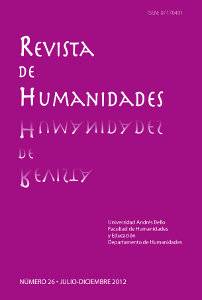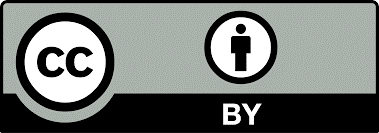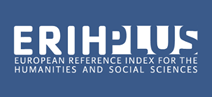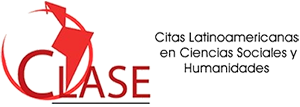El recurso a la autoridad de los filósofos Griegos en la obra cabalística Puerta del cielo de Abraham Cohen de Herrera
Palabras clave:
Cábala, sincretismo, Renacimiento, Causa Primera, HerreraResumen
El artículo muestra la presencia de postulados de filósofos griegos en la obra cabalística Puerta del Cielo de Abraham Cohen de Herrera. Se pretende hacer especial hincapié en aquellos momentos que subrayan la autoridad de dichos filósofos en la demostración de las afirmaciones secundadas por Herrera, como es el caso de la existencia de la causa primera. También se da cuenta de cómo semejante autoridad ahonda en el sincretismo que caracteriza el conjunto de la obra.
Descargas
Referencias
Altmann, Alexander. “Lurianic Kabbala in a Platonic Key. Abraham Cohen Herrera’s Puerta del cielo.” Jewish Thought in the Seventeenth Century. Ed. I. Twersky y B. Septimus. Harvard University Center for Jewish Studies: Harvard University Press, 1987, 1-37. Impreso.
Beltrán, Miquel. Un espejo extraviado. Spinoza y la filosofía hispano-judía. Barcelona: Riopiedras, 1998. Impreso
Cohen de Herrera, Abraham. Das Buch Sha’ar ha-Shamayim oder Pforte des Himmels. Trad. Friedrich Häussermann. Frankfurt, 1974. Impreso.
Cohen de Herrera, Abraham. Gate of Heaven. Trad. K. Krabbenhoft. Leiden: Brill, 2002. Impreso.
Cohen de Herrera, Abraham. Puerta del cielo. Manuscrito I. La Haya: Librería Real 1310 C 10. Completo. Impreso.
Cohen de Herrera, Abraham. Puerta del cielo. Trad. estudio y notas Kenneth Krabbenhoft. Madrid: Fundación Universitaria Española, 1987. Impreso.
Dujovne, León, Introducción a la historia de la filosofía judía. Buenos Aires: Ediciones Israel, 1949. Impreso.
De Haas, Jacob, ed. The Enciclopedia of Jewish Knowledge. New York: Behrman’s Jewish Book House, 1946. Impreso.
Del Valle, Carlos. “El mundo emanado, según la versión de Abraham Cohen de Herrera.” Boletín de la asociación española de orientalistas 37 (2001): 155-75. Impreso.
Finke, Manfred y Erni Handschur. “Christian Knorrs von Rosenroth. Lebenslauf aus den Jahre 1718.” Morgen-Glantz 1 (1991): 33-48. Impreso.
Idel, Moshe. Cábala. Nuevas perspectivas. Trad. M. Tabuyo y A. López. Madrid: Siruela, 2005. Impreso.
Idel, Moshe. Kabbalah in Italy, 1280-1510: A Survey. New Haven: Yale University Press, 2011. Impreso.
Idel, Moshe. Kabbalah. New Pespectives. London: New Haven, 1988. Impreso.
Krabbenhoft, K. “Structure and Meaning of Herrera’s Puerta del cielo.” Studia Rosenthaliana 16 (1982): 1-20. Impreso.
Krabbenhoft, K. “Syncretism and Millenium in Herrera’s Kabbalah,” Jewish Messianism in the Early Modern Period. Ed. M.D. Goldish. Netherlands: Dordrecht, 2001. 65-76. Impreso.
López-Baralt, Luce. “Puerta del cielo de Abraham Cohen de Herrera, ed. by Kenneth Krabbenhoft.” Hispanic Review 57, 2 (1989): 235-37. Impreso.
Melnick, Ralph. From Polemics to Apologetics. Jewish-Chistian Rapprochement in 17th Century. Assen: Van Gorcum, 1981. Impreso.
Saccaro del Buffa Battisti, G. “Abraham Cohen Herrera et le jeune Spinoza - entre kabbale et scolastique: à propos de la création ex nihilo dans les premiers écrits de Spinoza.” Archives de philosophie 51, 1 (1988): 55-73. Impreso.
Scholem, Gershom. Abraham Cohen Herrera ba’al sha’ar ha-shamajim, hajav, jezirato ve-hashpa’ato. Jerusalén: 1978. Impreso.
Scholem, Gershom. Las grandes tendencias de la mística hebrea. Trad. B. Oberländer. Madrid: Siruela, 2006. Impreso.
Scholem, Gershom. Major Trends in Jewish Mysticism. Jerusalem: Schocken Publishing House Inc, 1941. Impreso.
Descargas
Publicado
Número
Sección
Licencia
Derechos de autor 2022 Revista de humanidades (Santiago. En línea)

Esta obra está bajo una licencia internacional Creative Commons Atribución-NoComercial-SinDerivadas 4.0.
You are free to:
- Share — copy and redistribute the material in any medium or format for any purpose, even commercially.
- Adapt — remix, transform, and build upon the material for any purpose, even commercially.
- The licensor cannot revoke these freedoms as long as you follow the license terms.
Under the following terms:
- Attribution — You must give appropriate credit , provide a link to the license, and indicate if changes were made . You may do so in any reasonable manner, but not in any way that suggests the licensor endorses you or your use.
- No additional restrictions — You may not apply legal terms or technological measures that legally restrict others from doing anything the license permits.
Notices:
You do not have to comply with the license for elements of the material in the public domain or where your use is permitted by an applicable exception or limitation .
No warranties are given. The license may not give you all of the permissions necessary for your intended use. For example, other rights such as publicity, privacy, or moral rights may limit how you use the material.













